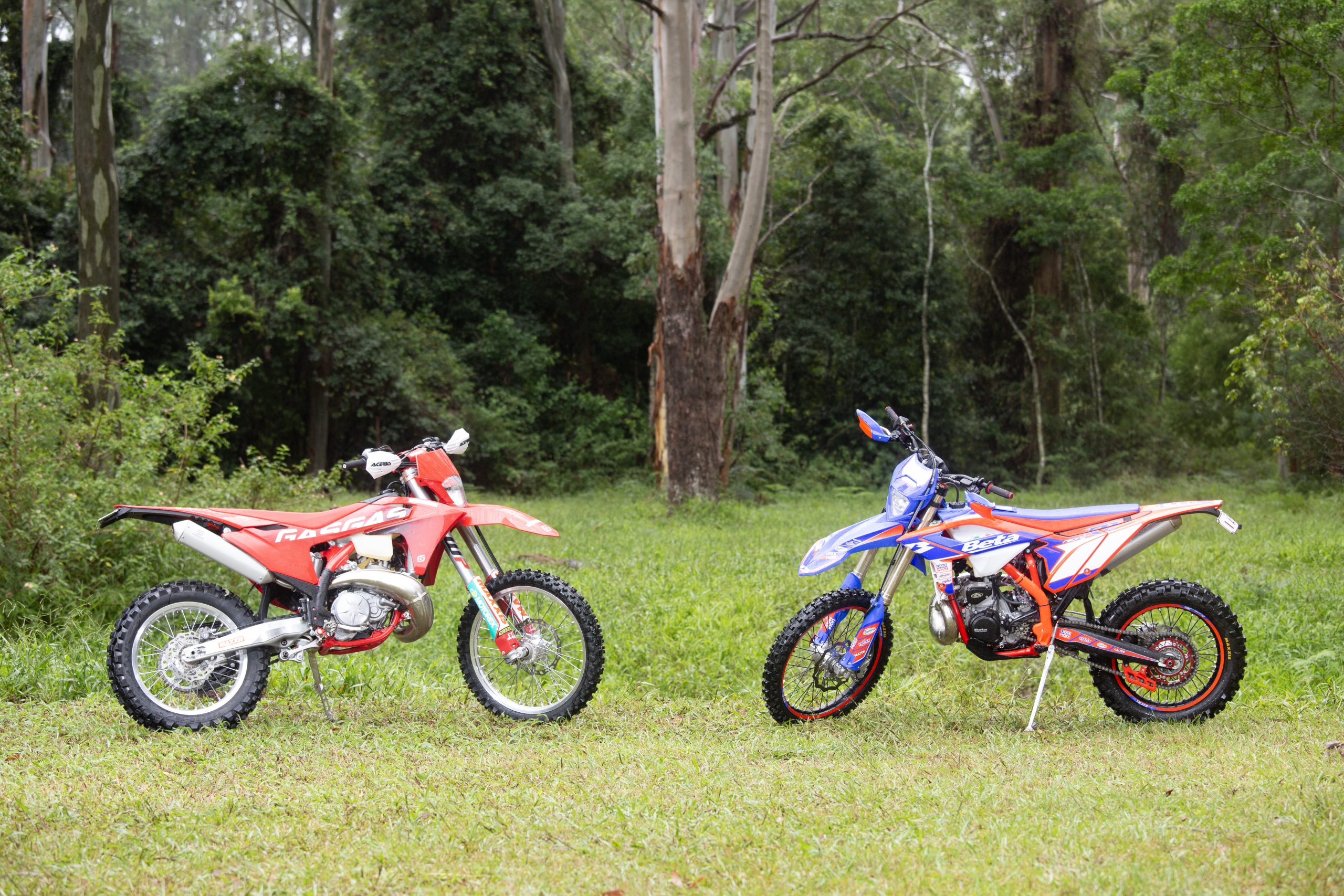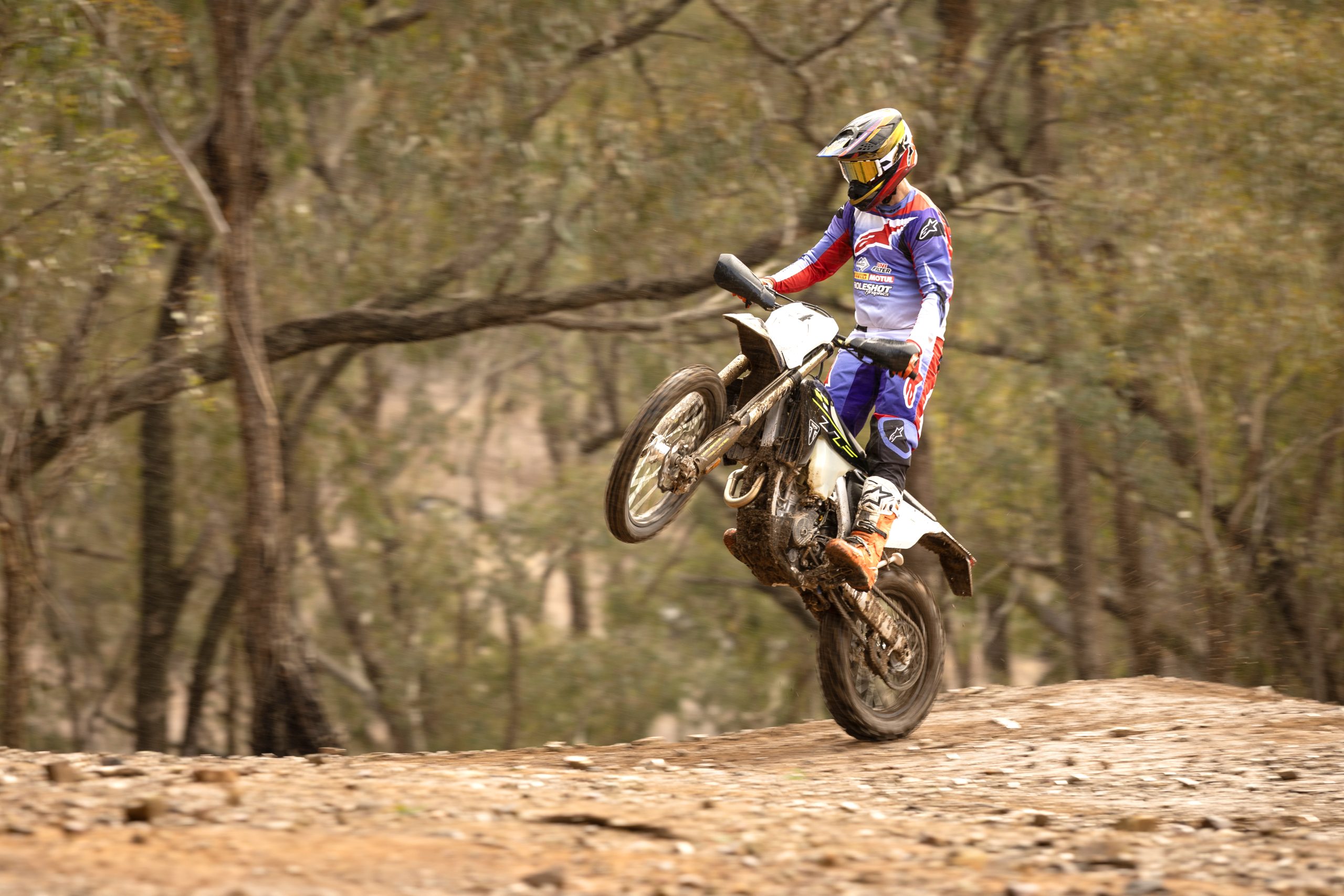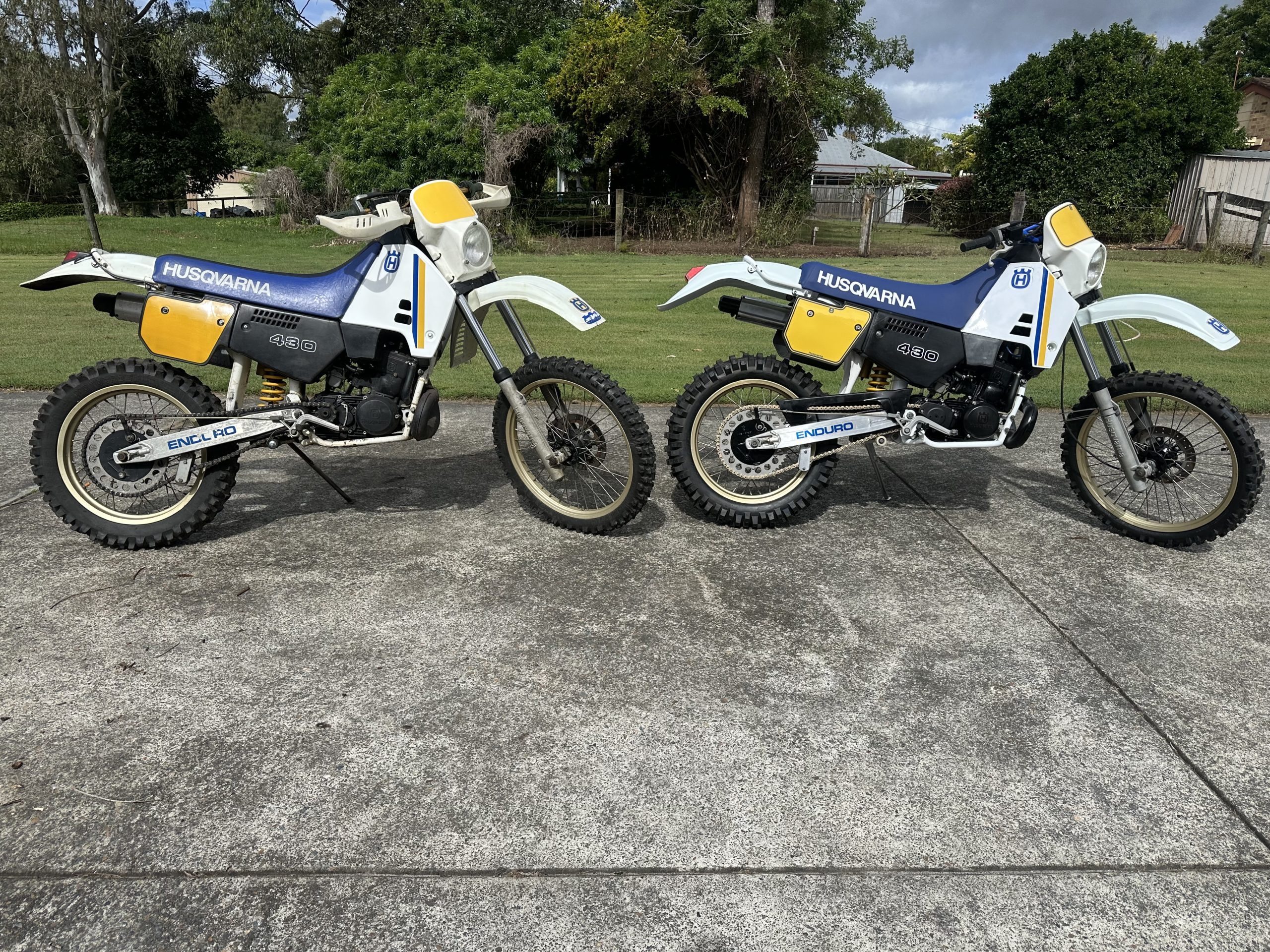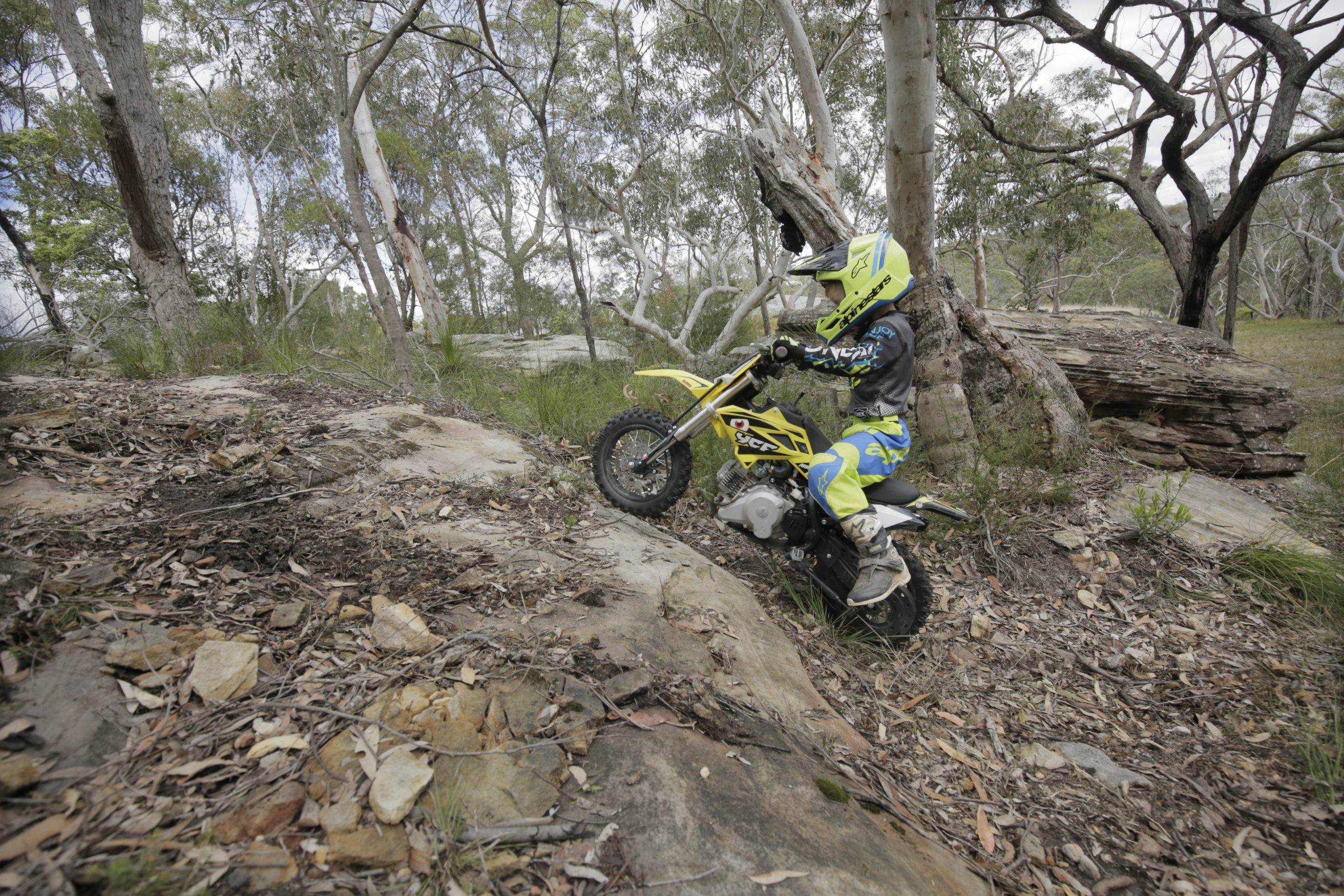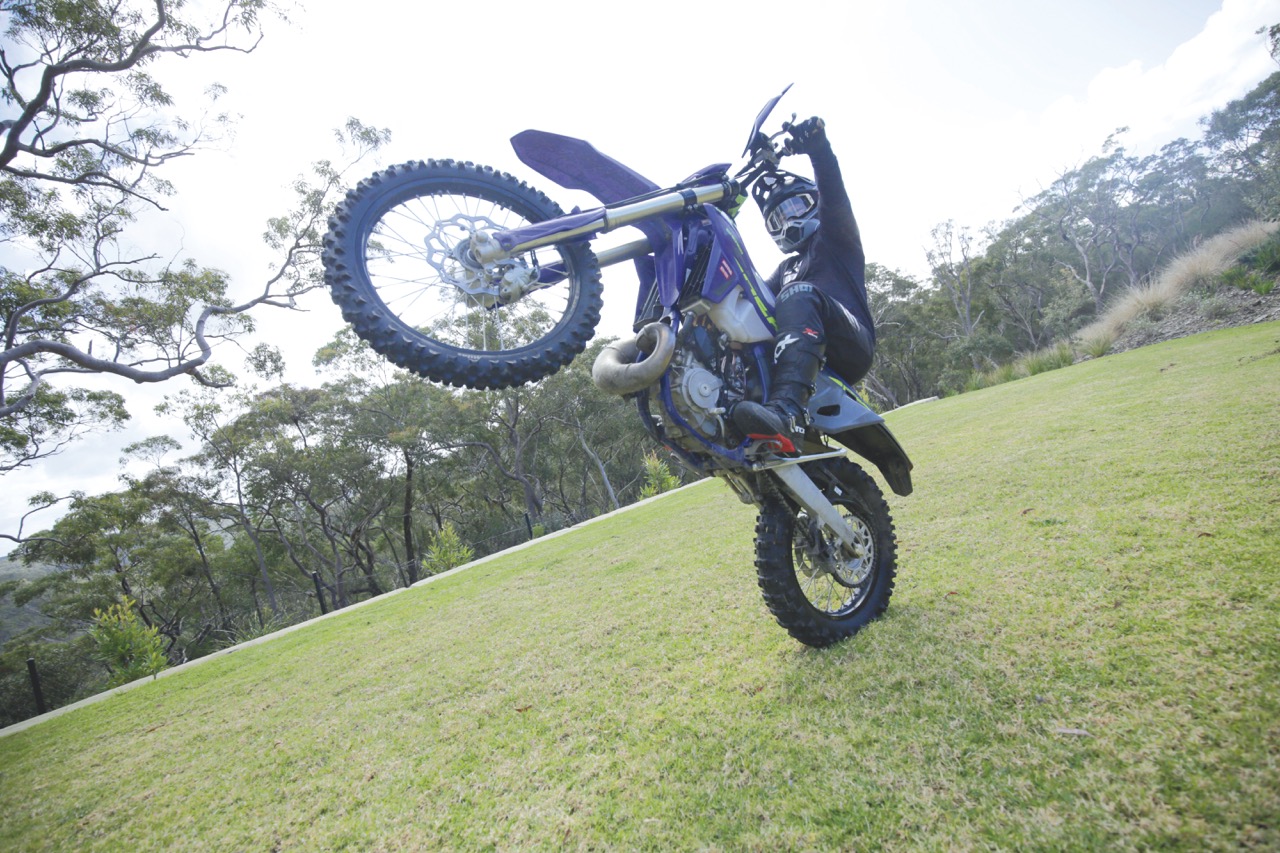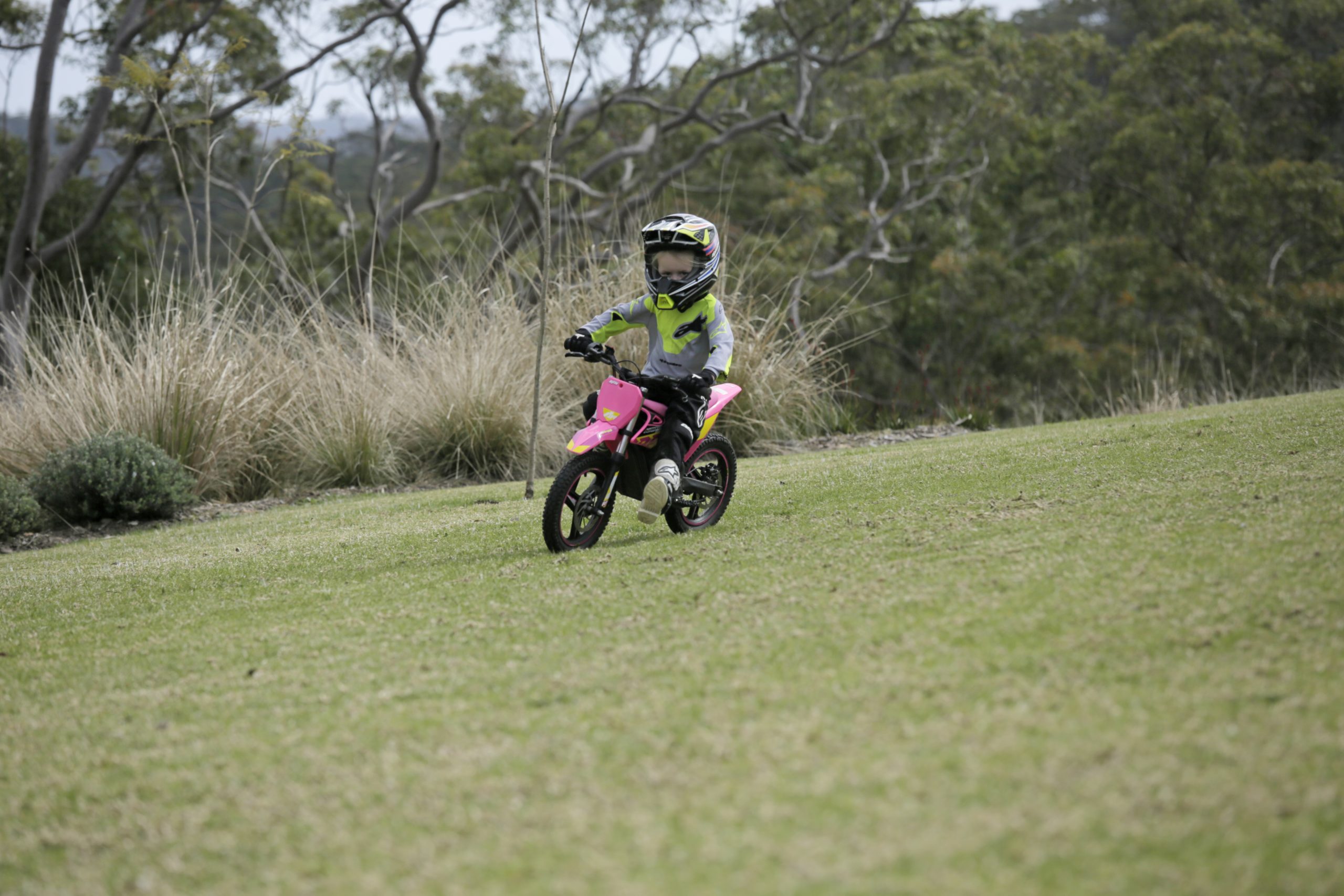Let the war begin. Has the emergence of electric dirt bikes ruined off-road motorcycling as we know it or, is the introduction of E-bikes the best thing to ever happen? The Stark Varg is the first production electric motocross bike that carries any real credibility to hit the market world-wide. The Varg is the real deal with serious power output, tuneability and suspension to match. The Varg is no longer the future, it is the here and the now so we thought we’d compare the Stark Varg with the Honda CR500.

ALL CHARGED UP
Steve Powell is a rider of credibility. The 2023 Australian Motocross 40+ Champion and 2023 Victorian Off-Road Expert Over-35 All-Power Champion is also a top-shelf dirt bike technician highly regarded for his engine and suspension work. Through his association with Byrner’s Motorcycles in Victoria, he has spent a lot of time testing the Stark Varg. And it was Powelly’s enthusiasm describing the performance of the Varg that fueled my curiosity, so he met me at PBI Ride Farm and handed me the Varg.
Holy hell does this thing go! My mind is still blown by just how hard this bike accelerates. I found myself yelling out loud to myself with excitement. It was pretty weird doing that and I wondered who could hear me.
The Varg I rode had the rear brake lever mounted on the left-side of the handlebars. No foot-activated rear brake. This took me some time to get my head around and for the first six laps I found myself searching for the rear brake with my foot. It made me realize I am a bit of a rear brake bandit.
I am a fairly average rider at the best of times so I really appreciated how this bike corners. I could come into a turn trailing a bit of rear brake and then gently begin applying throttle with confidence. This thing just peels corners apart and sends you hurtling down the next straight with no fuss.
To really ram home the point I was trying to prove to myself, I took my 2001-model Honda CR500 to the track to ride back-to-back with the Varg. Two worlds collided that day. For the record, the Varg is much easier to ride and makes more power but the CR500 is a different kind of cool.

WHAT’S MISSING?
Riding the Varg is not like riding any petrol-powered bike I have ever ridden. The fundamental skills that make up a large portion of the art of riding are not required. Any rider that has ridden a 125cc or 250cc two-stroke knows the feeling of exiting a corner in exactly the right gear, releasing the clutch at the just the right time and hearing the engine haul the mail as you click up another gear. You get it right and there’s no better feeling or better sound.
There-in lies the art. There is none of that on the Varg. No clutch. No gears. Just twist and go!
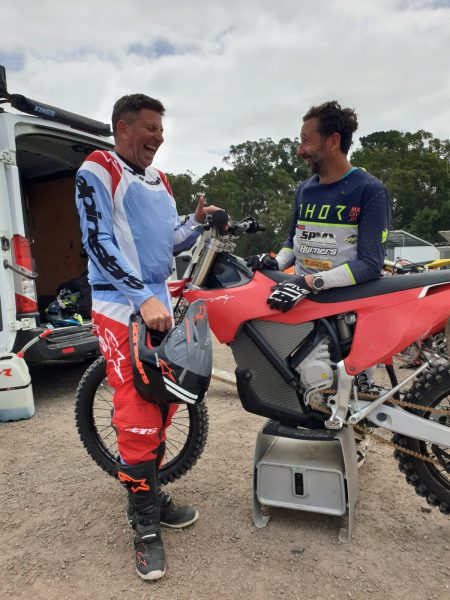
SLEETER BUSTS THE STARK VARG MYTHS
Stark Future Australia’s Mike Sleeter has spent more time testing the Varg than just about anybody on this planet. Sleeter is a career motocross man and began testing for KTM in the USA in 2005. The former pro racer now calls Australia home and he’s jumped head-first into the Stark Varg family and headlines their effort in Australia. Sleeter was the obvious man to answer the good, bad and outrageously stupid questions we have heard asked about the Varg.
ADB: What happens when you crash a Stark Varg? Do they explode?
MS: When you crash a Varg you don’t ding your muffler or your combustion chamber. What would you do if a combustion engine bike caught fire? You’d put it out. As you know, we have a lot of Tesla cars on the road now and we don’t have fire brigades following them down the highway.
There’s a lot of misinformation out there. If you do crash a Varg you make sure the ignition is off before picking it up so you don’t grab a handful of throttle accidentally.
ADB: What is the lifespan of the Varg’s battery?
MS: We have over 500 hours on the durability bike we have here in Australia. The biggest problem I have is losing knobbies every two rides because the traction is so insane. The motor is built really safe and it has an internal temp sensor that slows the bike down to preserve the bike if it gets hot. In over 500 hours we have not seen any issues with batteries and losing percentage on charge. As far as reliability yeah, we have had some teething problems with certain things but we’re not having top-end problems or clutch issues or transmission issues.
ADB: What is the average ride time of a fully charged Varg?
MS: It is all dependent on load, track conditions, speed and other variables. It is very much the same as petrol.
A CDR Yamaha 450 cannot go around a sand track for 30-minutes plus two-laps without a bigger tank than stock. A Factory Honda Team 450 cannot go 30 plus two around Wonthaggi without a bigger tank. The average rider would never run out of fuel at Wonthaggi but the average rider cannot go 30 plus two at Wonthaggi. So, the perception in expectation of the rider is dependent on load.
If you’re riding hard enduro, you might get a couple of hours on the Varg, or more. If you’re a really fast rider at Wonthaggi, you might go through the battery in 25-minutes. If you’re an average rider you might get 35-minutes. Speed, versus load versus surface is the equation.
If I ride an 18-minute moto, which is a pretty good moto for most of us, I have no battery life issue, no battery anxiety which is a real thing. I plug my bike in to charge then I have a drink, lube my chain or pick my blisters. By the time I go back out, the bike is at around 95 percent.
ADB: How do you charge your bike at the track?
MS: I use an off-grid power bank. I start my ride days with the bike fully charged. I can do two motos with that then I charge it with my external battery bank which gets me through a full day of riding.
As I heard someone say, tracks and clubs don’t supply petrol for bikes so why should they supply electricity? Some people use generators which works fine but that is not part of our ethos at Stark Future but generators are quite common. With Australia being such a big four-wheel-drive country there are some really cool setups with 6500watt converters with big power banks, full off-grid capabilities which could provide up to four full battery power charges. That’s a lot of riding in a day.
ADB: Is there a downside to owning a Stark Varg?
MS: There is no downside but there are certain things you cannot do on this bike yet. The up-side is you can tune the bike from track to track with different horsepower settings so you don’t have one model, I’d say you have a few models. But it doesn’t suit everyone or every discipline.
You cannot do Finke on a Varg, yet, but we are working on battery technology and charging technology is improving 8 percent year-on-year. If you took it to Finke with the speed and horsepower, there is no bike that could compete but, we will not make the range.
I think the thing is, we’ve created a bike that is so good in a couple of segments that everyone wants to adapt that horsepower to other areas and that is just not viable, today. Rest assured, we are working on things that will allow riders to ride the Varg across other sectors sooner rather than later. If you enjoy riding 10 and 20-minute motos, you’re going to be laughing because this is a motocross-specific bike.
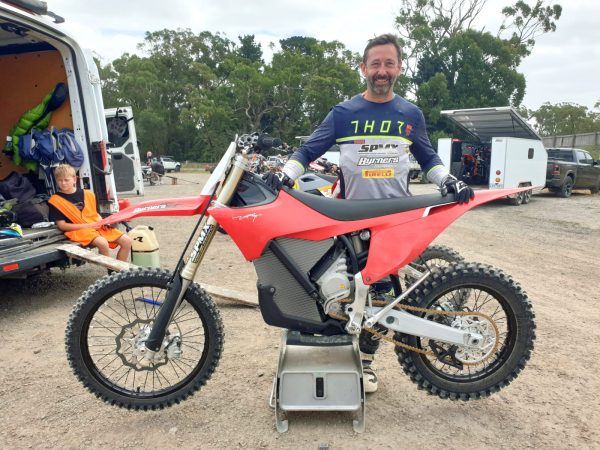
POWELLY PLAYS BOTH SIDES
Steve Powell knows bikes inside and out. His mechanical work is widely known and his riding credentials are high having raced two-strokes and four-strokes at the highest level in Australia and he’s a big fan of the Stark Varg. Here’s Powelly’s take on the Varg.
“I like the Varg because it is new, it’s different and the things that tingled my senses from riding it is the acceleration. The sensory side of it is there’s no noise but you get that whistle of air the faster you go. You can feel and hear the rear tyre ripping at the dirt beneath you”.
“The bike is exciting to ride because of the power but it’s easy to ride. If you have your front wheel in a rut, you’re going around the corner much easier because there’s no reciprocating mass and internal engine parts pushing you. There’s no clutch so there’s an option to have the rear brake up on the ’bars which is my favorite setup and there’s no gear lever so you can really lock in on the footpegs so much better. There’s so much torque and power on tap, it’s at an abundance level”.
“I had the opportunity to ride at a friend’s track that is neighbored by other houses. It was 8:00pm and we were still doing motos and we weren’t upsetting anybody. That is a pretty special thing”.
“It’s slightly different to set up from a 250F and 450F. I found the Varg to be very firm and the rear tyre didn’t get a lot of traction. I put in a setting that gave me more drive but then I found that because the bike has so much torque, the rear sat too low so I re-valved it to hold up better on acceleration”.
“The down-side of the Varg is the ride time. The faster and more aggressive you are on the bike, the more pressure you will put on the battery life. If you don’t have your own generator and you want to top up your battery, you might be out of luck”.
“The up-side is there are frequent updates coming from Stark Future that are simple to install and offer better charging and battery life. There’s no air-filter. There’s no engine oil to change other than a very small amount every 100-hours or so. After a ride you just wash them then scratch your head for a bit, lube the chain and put them away. Pound for pound, these bikes are very good, especially when you factor in a maintenance schedule.”

WORDS // TUFFY
PHOTOS // TUFFY AND CRUE POWELL


